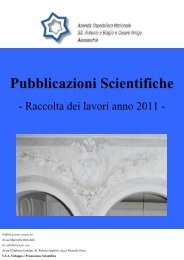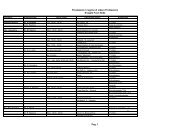Working Paper of Public Health Volume 2012 - Azienda Ospedaliera ...
Working Paper of Public Health Volume 2012 - Azienda Ospedaliera ...
Working Paper of Public Health Volume 2012 - Azienda Ospedaliera ...
Create successful ePaper yourself
Turn your PDF publications into a flip-book with our unique Google optimized e-Paper software.
<strong>Azienda</strong> <strong>Ospedaliera</strong> Nazionale“SS. Antonio e Biagio e Cesare Arrigo”<strong>Working</strong> <strong>Paper</strong> <strong>of</strong> <strong>Public</strong> <strong>Health</strong>nr. 14/<strong>2012</strong>past experience was negative, a mobility process will start towards a place where theperceived effectiveness is higher. Obviously, this perception might be linked to personalexperience as well as experiences <strong>of</strong> other people close to the patient. This means thatpatients are not able to recognize the validity <strong>of</strong> the medical treatment suggested by thephysician but, based on previous experience, they might believe in that prescription. This isexactly the cognitive dimension that was suggested in the previous section, i.e. the belief thata patient can have about the physician.Referring to the above mentioned patient, let us assume the general practitioner’s easier wayto face the issue, that is to say, prescription <strong>of</strong> tests and/or medical examination, as well aspotential hospitalization. After these tests, assuming the presence <strong>of</strong> several public medicalcare suppliers and the patients’ freedom <strong>of</strong> choice among them, where will they behospitalized to receive the prescribed treatment? Could the choice <strong>of</strong> a medical center beguided by the above mentioned process?A medical center is simply a set <strong>of</strong> people with specific medical knowledge and technicalinstruments to make diagnoses and give medical treatments. This means that the medicalcenter’s reputation reflects the patients’ trust in these workers; that is to say, the centre’sreputation is affected by each single medical activity <strong>of</strong> these workers on the patients. Thesepeople need the patients’ trust to perform their work. Otherwise, if these sick people do notbelieve in their saviors (i.e., the center has a bad reputation or it has failed a validationprocess), a mobility process will be performed, as described above. Moreover, consideringthat the medical centers’ activity might be more invasive than the simple examination <strong>of</strong> ageneral practitioner, this trust will necessarily be greater. This is exactly the behavioraldimension, i.e. the physician’s approach to the clinical case, which confirms or disproves aprevious good/bad belief and might lead to non-validation.According to the proposed background and taking hospitalization into account, even if thereis an information gap among the parties or there are no previous experiences, people wouldbe pushed by an internal force to move towards a better medical center. This force could bedefined as the patient’s survival instinct, i.e. a force able to distance the patient from badmedical centers, although this is only a perception and they are not truly aware <strong>of</strong> theimminent risk. Like a gazelle might unaware <strong>of</strong> walking into the lion’s den, a patient mightunaware <strong>of</strong> putting his/her head into the lion’s mouth. What could help both the gazelle andthe patient is their perception that they are on the borderline, that is to say the perception <strong>of</strong>an imminent risk. The force behind this perception is precisely their survival instinct.3



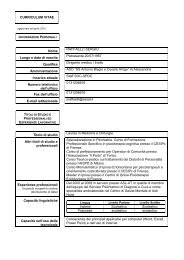
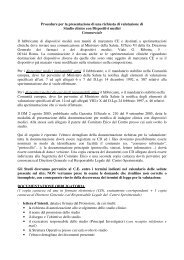

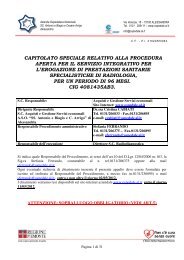
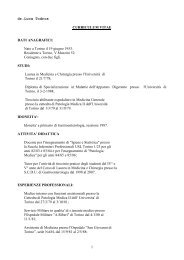
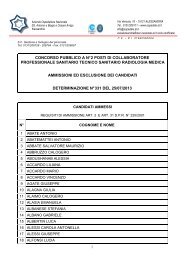

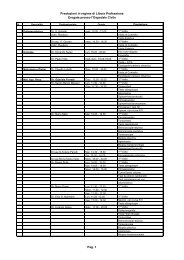


![[torino - 1] lastampa/urc/01 ... 26/10/09 - Azienda ...](https://img.yumpu.com/44058002/1/190x32/torino-1-lastampa-urc-01-26-10-09-azienda-.jpg?quality=85)

